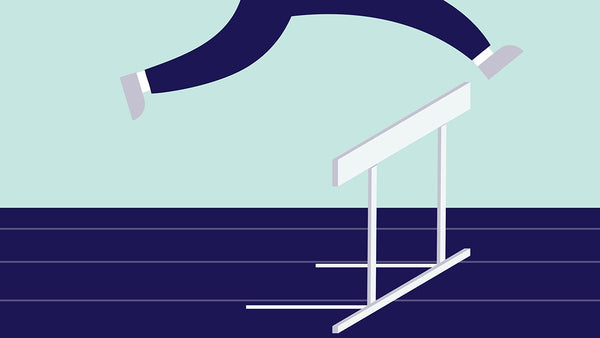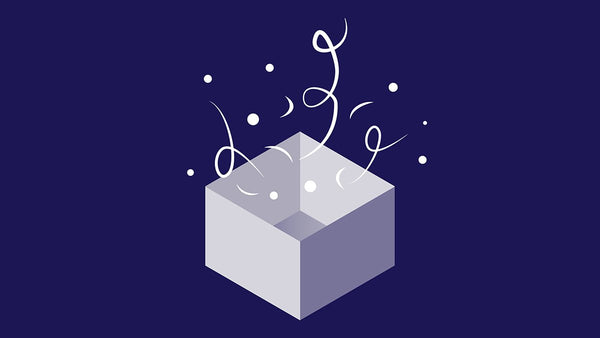“If you want to get to new places, you have to embrace some unknown and some risks. There are ways to design just enough creative risk-taking within a larger program. You do have to create space for the unknown.”
—Coe Leta Stafford, Co-Managing Director of IDEO U
In a special episode of our Creative Confidence Series podcast, IDEO U co-managing directors Suzanne Gibbs Howard and Coe Leta Stafford answered questions from our community of learners on how to overcome barriers to creativity at work with tactical examples, stories, and tips.
How do I get my teammates to think outside of the box?
Christel in France says: “My team is very creative in warm-up exercises and when working with case studies, but it’s difficult to get clients and colleagues to think outside of the box when reflecting on their own business.”
Analogous experiences are a great way for clients to feel what the customer experience is like for their end users and open up their minds to seeing their business in a new way. Often feeling these experiences yourself can be more transformative and motivating than observing someone else. In a project IDEO did with a hospital to improve their patient experience, an analogous experience opened up new insights for leadership when they saw how hectic and stressful a dining experience would be if customers ate in the kitchen, wore uncomfortable bibs, had no explanation of the food they were served, and endured long periods of unexplained waiting — an analogy for the way patients often see more of the backend operations at a hospital.
Coe’s Tip: To create a truly helpful analogous experience, choose something that’s both close enough to the core business that your team can see the connections, yet far enough away that it offers a new lens on familiar problems. Use these steps to pick the right setting:
- Identify the human need you are trying to solve without specifying the industry. In the hospital example, they need people coordinating tasks and activities that are high stakes with lots of handoffs.
- Brainstorm analogous scenarios that have a similar challenge. What other industries face this problem? How do they solve for it?
Another tool you can use to spark creativity in a team is divergent and convergent thinking — identifying which moments are for coming up with new ideas (divergent thinking) and when the team should be refining ideas (convergent thinking). Too often, teams have one divergent moment at the beginning of a project, then only converge going forward. Instead, embrace cycles of divergence and convergence over a project lifecycle. Divergent thinking is helpful when the work feels stuck, when everyone is disagreeing on what the path should be, or when teams are reverting back to safe ideas.
Coe’s Tip: When it’s time to converge and refine ideas, use a voting system with your team to ensure you don’t scrap all the most creative work in favor of safe ideas. Ask people to vote on the few plausible (yet ambitious!) options, but also the 1-2 wild ideas that feel risky, yet valuable to consider.

How can I help my team overcome inertia and stay creative?
Birgit in Germany asks: “I encounter pushback when trying to bring creative ways of thinking to people who are proud to have a solution for every problem. Once I do get them on board with exploring new ideas, the excitement often rubs off in a few days and they revert back to their old ways of doing things.”
Think about the experience your team has — often people go to a conference room or an offsite workshop, then they come back to their office where everything is the same. It’s easy to fall back into old patterns when you’re in the same environment.
To keep the insights you discovered and the customer you’re designing for alive all around you in your workspace, create artifacts that represent your customer and build out detailed archetypes to make it easier to relate to them and think of their needs. On an IDEO project about women and contraception, the team made displays to help explain the mindsets of the target audience. A few of the young women they met were represented at each booth where you could read about them and see examples of things that they valued or carried each day. Intel got creative to capture people’s attention with customer persona posters where they were most likely to see them — on bathroom stall doors.
Suz’s Tip: Make tangible and fun artifacts instead of digital-only slide decks and white paper reports. They often stay on people’s desks because they’re fun to see and touch. Think a deck of cards that shows customer behaviors, your key audiences, or methods of thinking you want to prioritize.
Another way to keep momentum going after a really great workshop is to build rituals into your daily or weekly routine. Start with micro-commitments – small actions that build over time to have a larger impact — like turning fear moments into curiosity by reframing problems as questions. Instead of “The customers aren’t engaging with our new product line,” try “How might we understand the barriers customers face in trying our new product line?” It’s a simple way to encourage collaboration and conversation among your team.
Coe’s Tip: Find an accountabilibuddy — someone you’ll be accountable to for achieving goals or making progress on a project. Support each other and cheer each other on!

How can I make room for creativity in spite of budget and time constraints?
Armand in France asks: “Most of my stakeholders demand I works on a fixed price and scope basis, so my team is pushed to eliminate uncertainty so they can meet those constraints. But during a project, I ask my teams to be creative, which introduces uncertainty into the mix. How might we better estimate creative work in a way that customers agree to spend for it?”
Creative leaders have to start by building up the way that we speak to the value of creativity nad how the process works. When it’s time to budget and scope a project, make sure you build space for creativity and make your creative practices official by giving them a name. This helps clients understand the value of creativity and see how it plays a part in the bigger process. Suz used this approach for a retail design project she worked on at IDEO years ago. Instead of scheduling formal interviews back to back all day, they built in time to get inspired and talk to people in the actual retail environment and called those moments “inspiration tours.” By planning a scavenger hunt that directed what each person was looking for, the team came back with insights on a specific challenge they were trying to solve.
Suz’s Tip: Scope out time for iterative loops of prototyping by identifying their purpose. For example, if we knew we needed about three rounds, we would call the first round “early stage explorations” or “sacrificial prototypes.” The second round is for getting the right idea, followed by a third round of prototyping that was about getting the idea RIGHT.
When there isn’t support for creative work upfront, sometimes you have to go out on a limb and do the work you know will be a game changer in addition to delivering on the core ask — an approach known as double delivery. In an IDEO project with an online retail company to surface customer insights for the product and marketing teams, they wanted to focus mainly on quantitative data. But the IDEO team knew that stats alone – divorced from stories about the real people and they ‘why’ behind their behaviors – would be limiting. So they focused on quantitative data, but also gathered qualitative customer stories and created videos and visuals to humanize the data. By tracking which assets were used the most, the IDEO team saw that the customer stories and videos were used about twice as often — a proof point they could use when suggesting qualitative research to new clients later on.
Jocelyn Wyatt, CEO of IDEO.org, uses a framework to get alignment on priorities — the theory of change — at the start of a project. By getting agreement on the outcomes they’re shooting for and the highest priority stakeholders to involve along the way, they earn more leeway and trust with the methods they use to get to the best solution.
Suz’s Tip: When kicking off a project, get your team and leadership aligned on priorities by asking what outcomes they value the most and determining how you will measure the success of the project. There’s often a tradeoff between budget, time, and quality.
Tune into the podcast for more from Suz and Coe, and keep an eye out for more office hours opportunities in the future. We love answering your questions!
For more tips on activating creativity within yourself and others, check out our on-demand class, Unlocking Creativity.
- choosing a selection results in a full page refresh
- press the space key then arrow keys to make a selection



